Best radar detector: choosing speed camera detectors & using them legally
Make an informed decision as you navigate the highways and avoid expensive fines (or worse) while saving lives
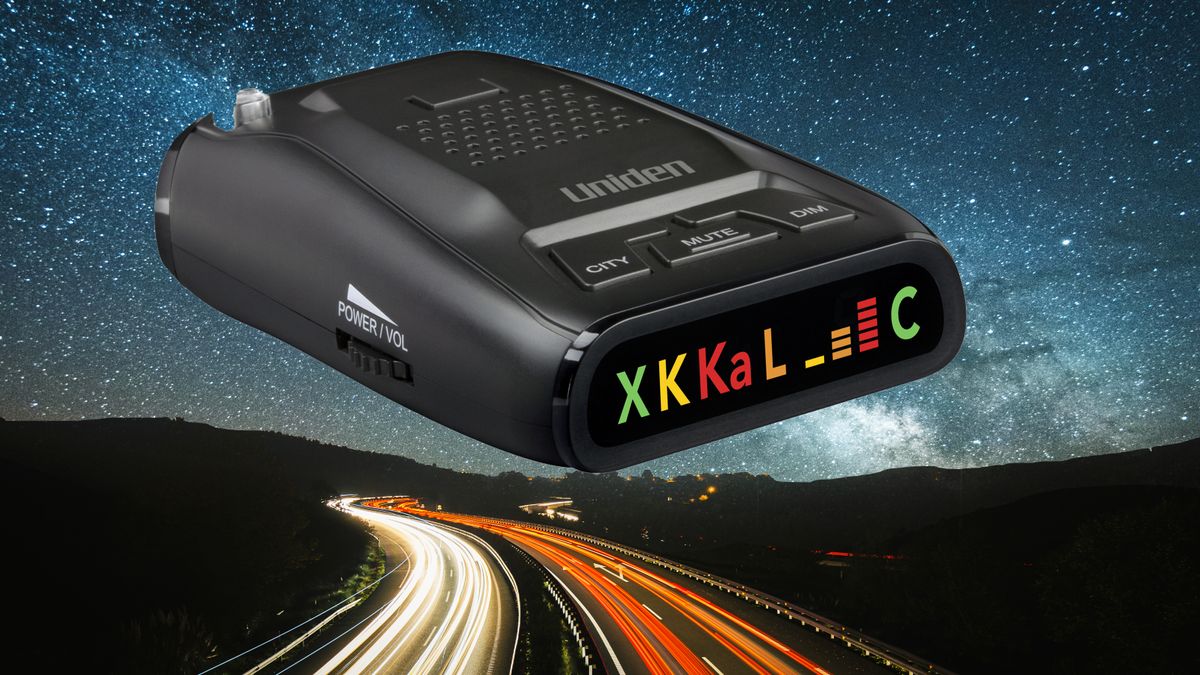
There are two different ways you can increase your awareness of speed enforcement, be they fixed speed cameras or cops with laser guns; one is through databases of pooled GPS locations – and the other is to actually sense the technology used by the speed measurement systems. The location data is something anyone with a smartphone can experiment with – popular apps like Waze share information on camera locations – but by using an app like this you’ll likely find you want to try something a little more sophisticated.
Radar detectors are typically available in windshield / dash mounts, so they’re easily moved from car to car, although you can also find some which can be fitted permanently. The sensors detect police radar guns, hence their common name, though they usually also detect modern LIDAR (laser) based detectors. Invisible Lasers have a much narrower beam so can detect speed from around a mile on straight road.
It’s also worth remembering that such detectors are illegal in Virginia, Washington DC and on Military bases, as well as on commercial vehicles over 10,000lbs, and are only allowed in a very few places in Canada. A feature that can solve this is auto-off, which uses location sensing to turn off the sensor in areas it is illegal.
Some states also allow drivers to use so-called ‘Jammers,’ which actively hamper speed measurement, but these are actively banned in California, Colorado, Illinois, Iowa, Minnesota, Oklahoma, South Carolina, Tennessee, Texas, Utah and Virginia. California & Minnesota also view windshield mounts as another offense: obstructing vision.
Finally, usability is a key issue; a lot of vehicles, and even shop doors, use LIDAR and similar technologies to detect obstacles or visitors – so systems to help reduce false positives without distracting use a lot of computing power to analyze the signals which can have cost implications.
Best radar detector in 2025
Why you can trust Digital Camera World
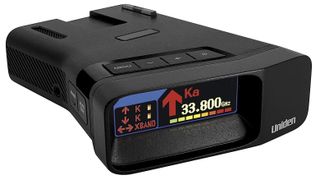
1. Uniden R7
Specifications
Reasons to buy
Reasons to avoid
This isn’t a cheap radar detector, but it’s capable of detecting at considerable distance and has a clear and easy to follow display with arrows warning where the alert was detected from. Thanks to the built-in GPS, you can teach this system where stationary false alerts are on your route – and mute each as you go. Auto lock-outs are also coming, too, following a patent dispute which has been settled.
The menu screen is pretty good, and all the programming is done directly unlike some devices (there is no app). This makes it a good choice for those less enamored with the world of touchscreens, though software updates are still available.
The R7’s false positive minimizing system, designed to reduce the number of alerts caused by the increasing number of cars with blind-spot sensors, could be better, though perhaps not while being such a good long-range detector. On that subject, the R7 usually manages the highest distances in feet from a radar detector at 2,100 to 2,400 ft, and the alert gets pretty loud quite fast.
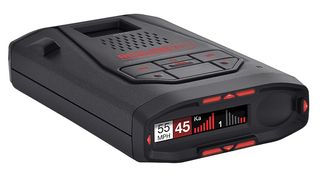
2. Escort Redline 360c
Specifications
Reasons to buy
Reasons to avoid
The Escort Redline 360C is a high-end product, supplied in a branded pouch with a cigarette socket charger and an elegant color OLED display relaying current speed and signal strength, accompanied by clear LED arrows (you can even change their color via the settings in the app) which alert you to the direction from whence the alert was triggered.
This design helps separate the useful information, from the Escort camera database, which is updated every Monday, from the essential which you need to react to lightning fast – the detection. That said, the ‘c’ in the name stands for ‘connectivity’ and takes advantage of your phone of car wi-fi to keep the GPS database as up-to-date as possible, and unlike many radar detectors the Redline 360c also has sensors for speed cameras which are more common in Canada now, but will no doubt spread.
Despite having a lot of functionality, the design is clean with a big mute button at the front, and the system is also compatible with the firm’s laser jammers making it possible to fit front-mounted laser jammers without too much drilling into your car (ideal for lease cars). You’re also likely to need to segment the bands carefully in the menus (easily done via the app) so you’re only alerted to those used in your area.
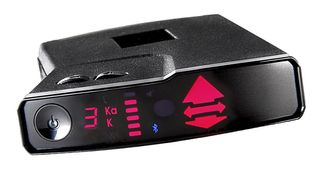
3. Valentine V1 Gen 2
Specifications
Reasons to buy
Reasons to avoid
This is another good long-distance detector at the high end of the market, featuring clear directional indicators in its LED display (a big forward arrow, and smaller ones for side or behind, easy to see on a bright day). The magnesium case helps extend the range and (if you see it as a benefit) makes the device very hard to detect. The electronics have been designed to filter out as much of the lane-change and driver-assist lasers which cause false positives as possible.
A nice optional extra for the V1 is the $69 Savvy, a speed module which is fitted directly to your car’s electronics and used to mute the system at low speed. On which subject, the Valentine is all about options – they allow external developers to make compatible apps, so there are already alternative options V1 Driver (iOS/Android) or JBB1 (Android), to the manufacturer’s own app, and these all provide GPS muting as an option making the $69 seem a little less necessary. The system also ramps up its alerts a little less urgently than some systems, and a progressive ramp-up can be nice, but when there is an officer with a gun it might not be quick enough for you.
Because it’s such a compact design, the V1 Gen 2 is easier than some to fit above the rear-view mirror and quickly remove and pack away as you need. The “All Bogies” mode, or A mode, has a range of 2,272 according to Red Barn.
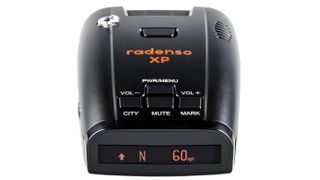
4. Radenso XP
Specifications
Reasons to buy
Reasons to avoid
While the package promises you’ll be ‘ticket free, guaranteed’ (for a year at least, although that’s probably not something to try in court). Nonetheless the Radenso XP has top-end sensitivity, able to identify radar alerts several miles away, complimented by blind spot monitor (BSM) or Traffic Sensor Rejection (TSM) filtering as Radenso call it, so the false positives should be kept to a minimum just as on pricier devices.
The GPS is built into the radar scanner, meaning it’s able to mute automatically based on your speed, and the system can identify multiple threats and remember locations you’ve muted.
A mini-USB port is provided for firmware and database updates (free for life) as well as the seemingly industry-standard RJ11 power connector (with lead to the 12V), while the rest of the design is simple and relatively compact, making this a relatively inexpensive way to get the features of the top models, save for the live database (which, in truth, you might well have via your navigation GPS).
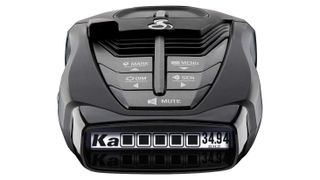
5. Cobra RAD 480i
Specifications
Reasons to buy
Reasons to avoid
Some of the Laser radar detectors on this list are, not to put too fine a point on it, more expensive than a speeding fine. As the lower end of the scale, though, a concern is that the technology won’t provide you with the same protection – not so much a lack of alerts as so many of them you brain will start to tune them out and then you’ll have bought a detector and still picked up a ticket.
The 480i solves opts by including some of the higher-end features like DSP (Digital Signal Processing) and IVT filtering (IVT is another term for In-Vehicle Tech, like the radar collision sensors), but mostly – thanks to a Bluetooth connection and Cobra’s iRadar app – the radar detector is able to take advantage of GPS-enhanced functionality like shared alerts (Cobra and Escort Live share the same database).
The design also includes an easy-to-turn volume dial for the voice alerts and a nice big mute button, though no manual lockout button.
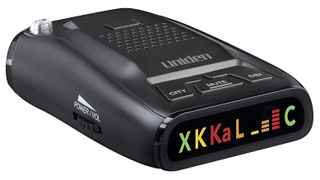
6. Uniden DFR1
Specifications
Reasons to buy
Reasons to avoid
There are a lot of expensive options in the radar detector market, but if you just want a device to sit under your windscreen and let you know about radar speed detectors, then the DFR1 will do that. It’ll also provide you with a none-too-expensive way to see if the experience if for you, and if you mind running a cable around the edge of your windshield and to the 12V socket.
Your previous settings are stored in memory when powering off, except mute, which is easy to access via the large button on the top centre. There aren’t many buttons, but usability is good thanks to the volume dial (alerts are still voice) and it’s worth re-stating that the price is wallet-friendly. Ultimately, though, it does not detect the frequency-modulated MultaRadar (MRCT/MRCD) systems and that might be a problem in some areas including NYC, Washington DC, Chicago and Canada.
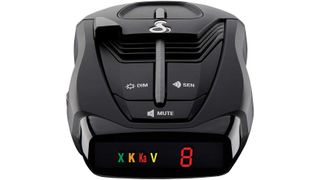
7. Cobra RAD 380
Specifications
Reasons to buy
Reasons to avoid
The 380 is a cut-down version of the pricier 480i further up this list. It has all the power of digital signal processing and the advantage of front and rear detection, so it’ll have no problem identifying radar systems and giving you early warnings. The adjustable sensitivity and built in intelligence – a technology RAD are glad to shout about having a patent for – detects false alerts reduce the alerts caused by things like reversing sensors. There is also a mute function and a dimmable display. This detector makes for a good balance between the high price of GPS & app compatibility and quality function and is supplied with a 12V adaptor.
Read more:
• Best dash cams • Best front and rear dash cams
• Best backup camera • Best body cameras
• Best helmet cameras
Get the Digital Camera World Newsletter
The best camera deals, reviews, product advice, and unmissable photography news, direct to your inbox!

With over 20 years of expertise as a tech journalist, Adam brings a wealth of knowledge across a vast number of product categories, including timelapse cameras, home security cameras, NVR cameras, photography books, webcams, 3D printers and 3D scanners, borescopes, radar detectors… and, above all, drones.
Adam is our resident expert on all aspects of camera drones and drone photography, from buying guides on the best choices for aerial photographers of all ability levels to the latest rules and regulations on piloting drones.
He is the author of a number of books including The Complete Guide to Drones, The Smart Smart Home Handbook, 101 Tips for DSLR Video and The Drone Pilot's Handbook.